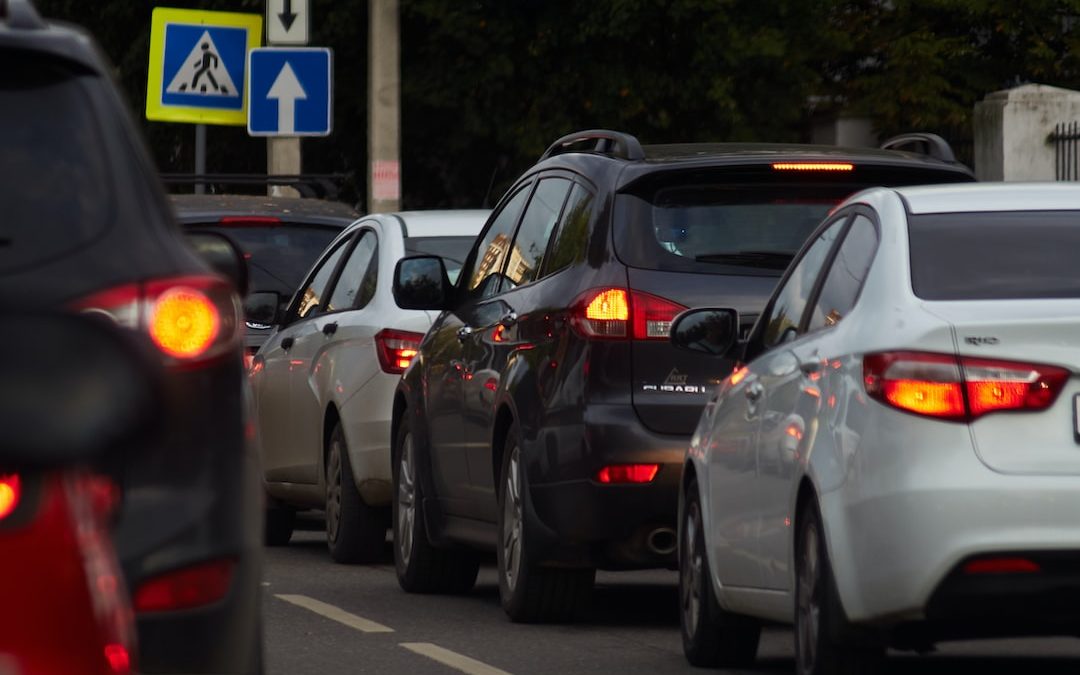Table of Contents
Using Urban Mobility Tech to Reduce Congestion
In recent years, cities around the world have seen a surge in traffic congestion. This has caused great inconvenience to urban dwellers, particularly those living in metropolitan areas. In order to ease this problem and make urban living more bearable, many cities are turning to technology and urban mobility tech solutions to reduce congestion.
Urban mobility solutions include a wide range of technologies, such as smart traffic lights, connected vehicles, shared mobility services, and innovative transportation systems. All of these solutions have the potential to reduce congestion, improve safety, and make transportation more efficient. In this blog post, we will explore the various technologies being utilized to reduce traffic congestion and the benefits that they can bring to cities.
Smart Traffic Lights
Smart traffic lights are one of the most popular solutions for reducing congestion. These lights use sensors and cameras to detect the flow of traffic and adjust the timing of the signals accordingly. This ensures that traffic flows more smoothly and efficiently, reducing delays and improving safety. Smart traffic lights can also be programmed to respond to different types of vehicles, giving priority to emergency vehicles, buses, or other types of transportation.
Smart traffic lights can also be connected to other traffic management systems, such as traffic cameras and speed limits, to give a more comprehensive view of the traffic situation. This can help cities identify problem areas and develop better solutions for reducing traffic congestion.
The benefits of smart traffic lights go beyond just reducing congestion. They can also help reduce emissions, improve air quality, and save energy. Furthermore, since the lights are connected to other systems, they can provide data that can be used to develop better traffic management solutions.
Connected Vehicles
Connected vehicles are another popular solution for reducing traffic congestion. These vehicles are equipped with sensors and other technologies that enable them to communicate with each other and with traffic management systems. This allows the vehicles to adjust their speed and route based on current traffic conditions, resulting in a smoother and more efficient flow of traffic.
Connected vehicles also have the potential to reduce emissions and improve safety by providing real-time data about the road conditions. This data can be used to alert drivers of dangerous conditions and can even be used to help autonomous vehicles navigate the roads more safely.
Furthermore, the data collected from connected vehicles can be used to develop better traffic management solutions, such as dynamic speed limits and optimized routing algorithms. This can help cities reduce congestion and improve safety.
Shared Mobility Services
Shared mobility services are becoming increasingly popular in cities around the world. These services, such as ride-hailing and bike-sharing, provide convenient and cost-effective transportation options to urban dwellers. This can help reduce congestion by reducing the number of cars on the roads and encouraging people to use more sustainable forms of transportation.
Shared mobility services can also help reduce emissions by providing vehicles that run on alternative fuels, such as electric or hybrid cars. Furthermore, shared mobility services can provide real-time data about the roads and traffic conditions, which can be used to develop better traffic management solutions.
Finally, shared mobility services can help reduce social inequality by providing affordable transportation options to those who may not be able to afford a car or public transportation.
Innovative Transportation Systems
Innovative transportation systems are another way cities are tackling traffic congestion. These systems, such as autonomous vehicles and hyperloop systems, have the potential to revolutionize transportation in urban areas. Autonomous vehicles can reduce the number of cars on the roads by providing an efficient and cost-effective alternative to traditional transportation, while hyperloop systems can reduce travel times by providing a fast and reliable connection between cities and towns.
Innovative transportation systems can also provide real-time data about the roads and traffic conditions, which can be used to develop better traffic management solutions. Furthermore, these systems can help reduce emissions by providing vehicles that run on alternative fuels, such as electric or hybrid cars.
Finally, innovative transportation systems can help reduce social inequality by providing affordable transportation options to those who may not be able to afford a car or public transportation.
Smart Parking Solutions
Smart parking solutions are also being used to reduce congestion in cities. These solutions utilize sensors and other technologies to provide real-time data about the availability of parking spaces in a given area. This helps drivers find a parking spot quickly and efficiently, reducing the amount of time spent looking for a spot and reducing traffic congestion.
Smart parking solutions can also be connected to traffic management systems, such as traffic cameras and speed limits, to give a more comprehensive view of the traffic situation. This can help cities identify problem areas and develop better solutions for reducing traffic congestion.
Finally, smart parking solutions can help reduce emissions by providing vehicles that run on alternative fuels, such as electric or hybrid cars. Furthermore, these solutions can provide data that can be used to develop better traffic management solutions.
Intelligent Transportation Systems
Intelligent transportation systems are another way cities are tackling traffic congestion. These systems use sensors and other technologies to monitor and manage the flow of traffic. This helps to reduce delays, improve safety, and make transportation more efficient.
Intelligent transportation systems can also be connected to other traffic management systems, such as traffic cameras and speed limits, to give a more comprehensive view of the traffic situation. This can help cities identify problem areas and develop better solutions for reducing traffic congestion.
Furthermore, intelligent transportation systems can help reduce emissions by providing vehicles that run on alternative fuels, such as electric or hybrid cars. Finally, these systems can provide data that can be used to develop better traffic management solutions.
Public Transportation Solutions
Public transportation solutions are also being used to reduce traffic congestion in cities. These solutions include improved bus and rail networks, improved bike lanes, and increased access to shared mobility services. All of these solutions can help reduce the number of cars on the roads, reducing congestion and improving safety.
Public transportation solutions can also help reduce emissions by providing vehicles that run on alternative fuels, such as electric or hybrid cars. Furthermore, these solutions can provide real-time data about the roads and traffic conditions, which can be used to develop better traffic management solutions.
Finally, public transportation solutions can help reduce social inequality by providing affordable transportation options to those who may not be able to afford a car or public transportation.
Data-Driven Solutions
Data-driven solutions are also being used to reduce traffic congestion. These solutions utilize data collected from traffic cameras, sensors, and other sources to provide a comprehensive view of the traffic situation. This data can then be used to develop better traffic management solutions, such as dynamic speed limits and optimized routing algorithms.
Data-driven solutions can also provide real-time data about the roads and traffic conditions, which can be used to alert drivers of dangerous conditions and can even be used to help autonomous vehicles navigate the roads more safely.
Finally, data-driven solutions can help reduce emissions by providing vehicles that run on alternative fuels, such as electric or hybrid cars.
Conclusion
In conclusion, urban mobility tech solutions are becoming increasingly popular in cities around the world. These solutions, such as smart traffic lights, connected vehicles, shared mobility services, and innovative transportation systems, have the potential to revolutionize transportation in cities and reduce traffic congestion. Furthermore, these solutions can also help reduce emissions, improve air quality, and save energy. Finally, they can provide real-time data that can be used to develop better traffic management solutions.
Overall, urban mobility tech solutions are proving to be an effective way to reduce congestion and make urban living more bearable. As cities around the world continue to invest in these solutions, they will become increasingly important in the fight against traffic congestion.












